題名
Indications and Outcomes for Arthroscopic Hip Labral Reconstruction With Autografts: A Systematic Review
自家移植を用いた関節鏡下股関節唇再建術の適応と成績。システマティックレビュー
要約
原文
Abstract
Background: The acetabular labrum plays a major role in hip function and stability. The gold standard treatment for labral tears is labral repair, but in cases where tissue is not amenable to repair, reconstruction has been demonstrated to provide superior outcomes compared to debridement. Many types of grafts have been used for reconstruction with good to excellent outcomes. Autograft options include iliotibial band (ITB), semitendinosus, and indirect head of the rectus femoris tendon, while allografts have included fascia lata and gracilis tendon allografts. Questions/Purposes: As allografts are not always readily available and have some inherent disadvantages, the aims of this systematic review were to assess (1) indications for labral reconstruction and (2) summarize outcomes, complications, and reoperation rates after arthroscopic labral reconstruction with autografts. Methods: A systematic review of the literature was performed using six databases (PubMed, CINAHL, Cochrane Central Register of Controlled Trials, Cochrane Database of Systematic Reviews, Scopus, and Google Scholar) to identify studies reporting outcomes for arthroscopic labral reconstruction utilizing autografts, with a minimum follow-up of 1 year. Study design, patient demographics, autograft choice, complications, donor site morbidity, reoperation rates, conversion to arthroplasty, and patient reported outcomes were extracted and reported. Results: Seven studies were identified for inclusion with a total of 402 patients (173 females, age range 16-72, follow-up range 12-120 months). The most commonly reported functional outcome score was the modified Harris Hip Score (mHHS), which was reported in six of seven studies. Preoperative mHHS ranged from 56 to 67.3 and improved postoperatively to a range of 81.4-97.8. Conversion to total hip arthroplasty and reoperation rates ranged from 0 to 13.2% and 0 to 11%, respectively. The most common indication for labral reconstruction was an irreparable labrum. Autografts utilized included ITB, hamstring tendons, indirect head of rectus femoris, and capsular tissue. Conclusions: Arthroscopic autograft reconstruction of the acetabular labrum results in significant improvement in the short- and mid-term patient reported outcomes, for properly selected patients presenting with pain and functional limitation in the hip due to an irreparable labral injury.
Keywords: autograft; femoroacetabular impingement syndrome; hip arthroscopy; labrum; suction seal.
Copyright © 2020 Bessa, Williams, Polce, Neto, Garcia, Leporace, Metsavaht and Chahla.
翻訳文
背景
臼蓋部(acetabular labrum)は股関節の機能と安定性に大きな役割を担っている。臼蓋部断裂のゴールドスタンダード治療は臼蓋修復術であるが、組織が修復に適さない場合、再建術はデブリードマンと比較して優れた治療結果をもたらすことが証明されている。再建には多くの種類の移植片が使用され、良好な治療成績が得られている。自家移植には腸脛靱帯(ITB)、半腱様筋、大腿直筋腱間接部などがあり、同種移植には大腿筋膜や鉤状筋腱の移植が行われている。
臨床疑問/目的
同種移植片は必ずしも容易に入手できるとは限らず、固有の欠点もあるため、この系統的レビューの目的は、(1)関節唇再建術の適応、(2)自家移植片を用いた関節鏡下関節唇再建術後の成績、合併症、再手術率を要約して評価することであった。
方法
6つのデータベース(PubMed、CINAHL、Cochrane Central Register of Controlled Trials、Cochrane Database of Systematic Reviews、Scopus、Google Scholar)を用いて文献の系統的レビューを行い、最低1年のフォローアップで、自家移植を用いた関節鏡視下手術の結果を報告する研究を同定した。研究デザイン、患者属性、自家移植の選択、合併症、ドナー部位の罹患、再手術率、関節形成術への転換、患者報告アウトカムを抽出し、報告した。
結果
7件の研究が対象となり、合計402名の患者(女性173名、年齢範囲16~72歳、フォローアップ期間12~120ヶ月)が含まれることが確認された。最も多く報告された機能的転帰スコアはmodified Harris Hip Score(mHHS)であり、7報中6報で報告された。術前のmHHSは56~67.3であり、術後は81.4~97.8の範囲に改善した。人工股関節置換術への移行率と再手術率は、それぞれ0~13.2%と0~11%であった。臼蓋再建術の最も一般的な適応は、修復不可能な臼蓋であった。使用された自家移植は、ITB、ハムストリング腱、大腿直筋間接骨頭、被膜組織などであった。
結論
寛骨臼の関節鏡下自家移植による再建は、修復不可能な臼蓋損傷による股関節の痛みと機能制限を呈する患者を適切に選択した場合、短期および中期の患者報告アウトカムに著しい改善をもたらす。
キーワード:自家移植、大腿骨臼蓋インピンジメント症候群、股関節鏡検査、臼蓋、吸引シール。
感想
「最も多く報告された機能的転帰スコアはmodified Harris Hip Score(mHHS)」とあるが、modified Harris Hip Score(mHHS)について知らなあかんと思った。
人工股関節置換術への移行率と再手術率は、それぞれ0~13.2%と0~11%と低い値と思った。移行した群としなかった群の違いを知りたくなった。
移植組織はいろいろ挙げられていたが、最優先はやはりITBか?
以上でおしまい😁
コンディショニングケア機器の紹介
アスリートが最高のパフォーマンスを発揮するために欠かせないこと。それは、日々のコンディション管理。
使う場所を選ばない、超軽量・コンパクト設計の「AT-mini Personal I」と「AT-mini Personal II」は、 マイクロカレント(微弱電流)が効果的に働きかけ、身体をしっかりとケアすることができる。
世界の舞台でアスリートを支えるITOの技術が、あなたのコンディショニングケアをサポート!
障害予防におすすめの一品です。

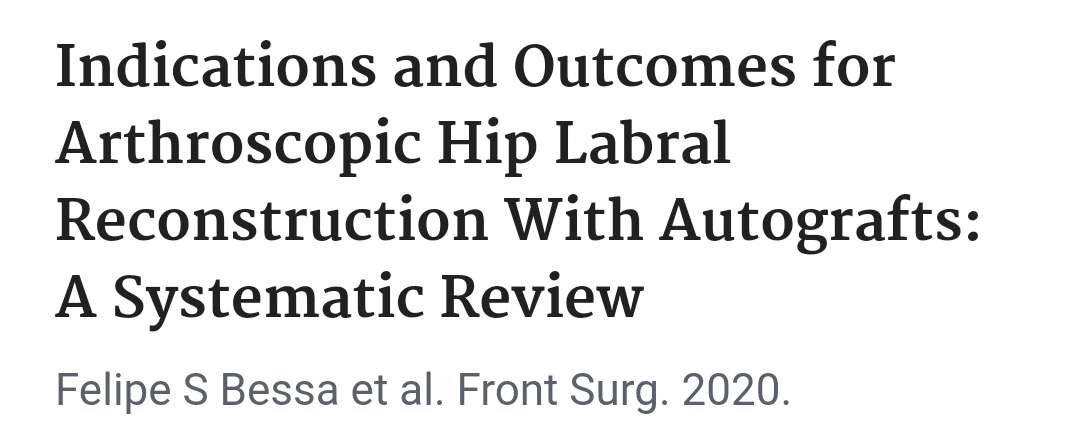

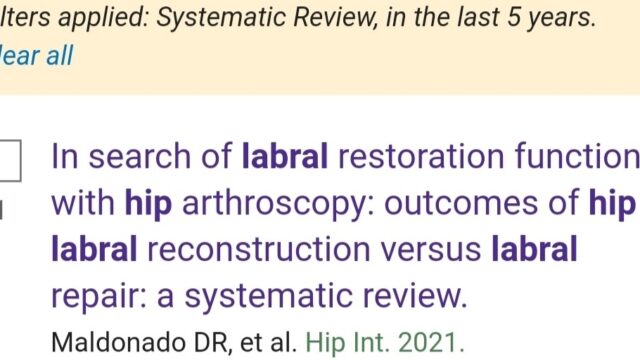

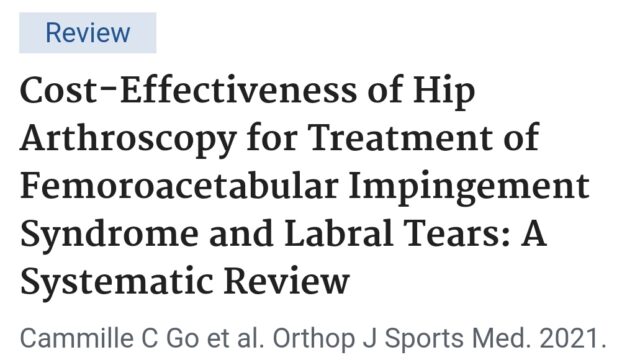


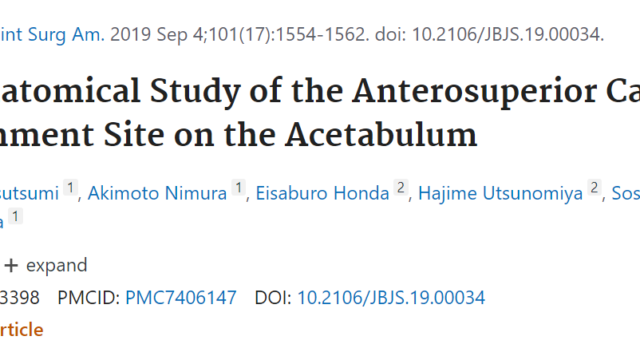
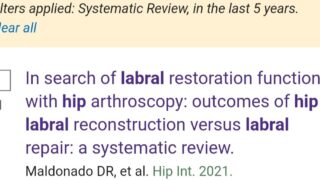






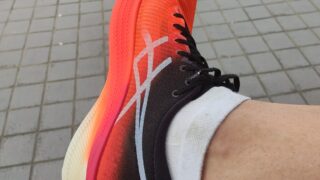
はじめまして。 とても興味をひかれました! ふだん改造ビーチサンダルやlun…
ありがとうございます。嬉しいです みちさんが保存療法でよくなることを願っています…
経過良好で安心しました^_^ やはりリハビリが大事なのですね。 術後の記事、…
お大事に下さい。こちらこそありがとうございました。
コメントありがとうございます。 心強いです。 金曜日に県内のスポーツ外来を受…